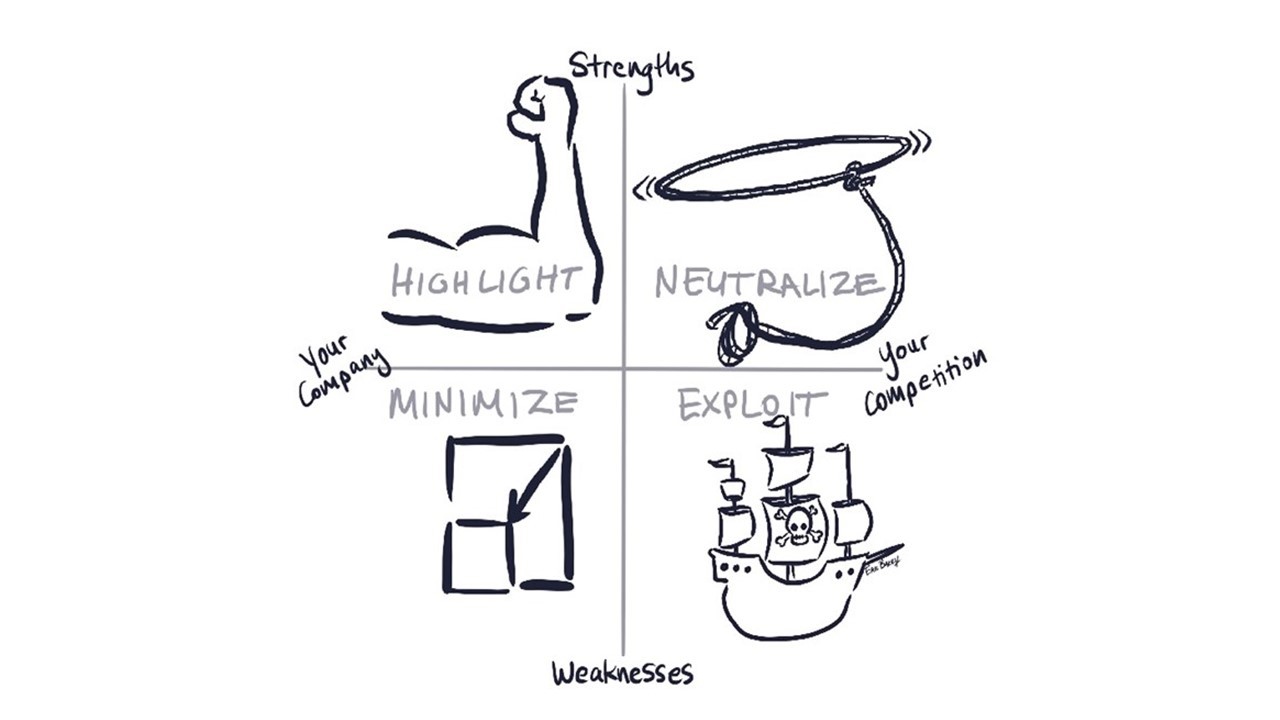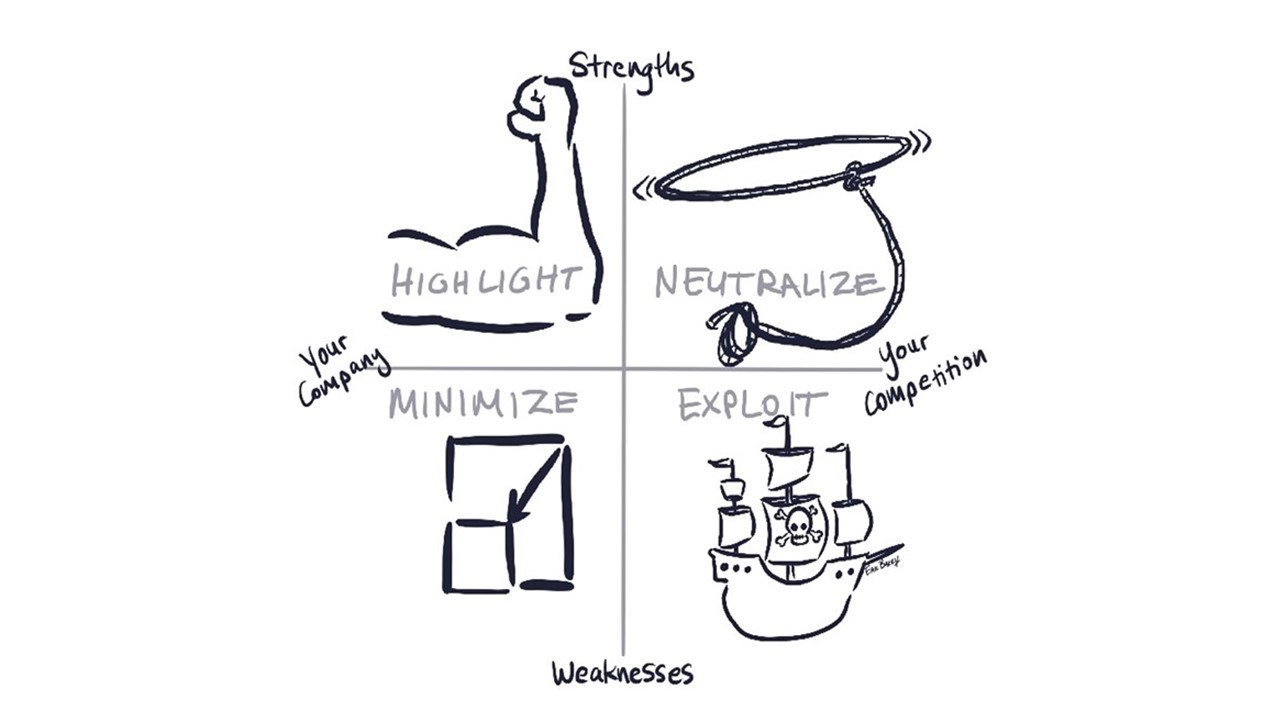Winning competitive pursuits is a “thinking person’s business.” This business tenet is particularly true when trying to win solution-based, high-dollar value, prime contracts in the government contracting (GovCon) space. “What does it mean to thinking though competitive pursuits?” Well, there are many and diverse components to thinking through such pursuits.
This article discusses one key component―ghosting. No, not the relatively new and popular dating term (i.e., suddenly stopping contact with someone without giving that person any warning or explanation for doing so). Instead, this article discusses ghosting in terms of winning a competitive GovCon pursuit.
Pre-Request for Proposal (RFP) Shaping
You should attempt to meet with the customer early and often to:
- Present your company’s strengths
- Minimize or eliminate your company’s weaknesses
- Minimize or eliminate competitor strengths
- Create or increase competitor weaknesses
Pre-RFP shaping is a team sport. It should involve the key players at your company:
- Executive Management
- Business Development
- Contracts
- Capture Manager
- Intended Program Manager
- Technical Subject Matter Experts (as appropriate)
Attempt to drive the RFP in your direction. Do this shaping before the competition shapes the RFP in their direction to your detriment. Areas to influence include the following:
- Acquisition plan (e.g., use of your company’s contractual vehicle)
- Requirements
- Evaluation criteria
- Adjustments to the solicitation process that could be favorable to your company (e.g., orals if you are the incumbent or due diligence if you are not the incumbent)
Section M of the RFP lists the factors the government uses to compare each bid. It specifies which factors are the most important to the government. Maximize your win potential by understanding the weighting of specific bid components, such as the technical approach, personnel, and price. This insight allows you to tailor your proposal response to score the most points.
You can win in the pre-solicitation phase by engaging the customer early to help change the RFP toward what your company offers. Adjust your proposed solution as needed once the customer releases a final solicitation. It is also key to move the customer’s impression of the competition away from what the customer wants. In the proposal phase, this technique is known as competitive ghosting. (More on this technique in the section that follows).
Use customer calls to help shape the requirements. Present your views on what it will take to make the customer’s program a success. Link your views on success to your unique qualifications. Influence evaluation criteria to play to your strengths.
Also, influence the procurement method (e.g., best value versus lowest price technical acceptable [LPTA] bidder). Use white papers to address aspects of your approach. Identify and reach out to as many stakeholders as possible. Build effective responses to Requests for Information (RFIs) and draft RFPs. These shaping techniques help build positive perceptions with the customer about your company. Collectively, these techniques together help influence aspects of the final RFP (e.g., proposal format, scope of work, and evaluation factors and weights).
Ghosting
Leverage ghosting by using information about the competition to win. “Ghosts” can be more or less visible, depending on your degree of competitor context. Context of the customer, program, and competition should be correct and current. Otherwise, ghosting will not be effective. Convince evaluators to choose your company and not the competition. Do this convincing by applying one of six proposal strategies across your proposed integrated solution set:
- Highlight your company’s strengths.
- Minimize your company’s weaknesses.
- Neutralize the likely competitors’ strengths.
- Highlight the likely competitors’ weaknesses.
- Counter how a likely competitor could exploit your weakness.
- Counter how a likely competitor could neutralize your strength.
Always remember that the integrated solution is not only technical. It is an integrated set of components bounded by context of the customer, program, and the competition that also includes:
- Team (i.e., Prime and Teaming Partners)
- Past Performance
- Leadership Team (i.e., Key Personnel)
- Management Approach
- Methods, Processes, Tools, and Techniques
- Staffing Solution
- Price-to-Win (PTW) and Basis-of-Estimate (BOE)
To best apply discriminators, analyze trade-offs between aspects of your approach versus that of the competition, then ghost the competition. Achieving a balance between two desirable, but incompatible features results in a trade-off. For example, let’s assume that your company’s approach has a lower cost with new technology, whereas the competition’s approach has a higher cost and older technology. The competition’s conservative approach is less risky than your proposed breakthrough approach. Your approach is risky because you must develop your offering while the competition’s is available to immediately meet the customer’s mission needs. Use neutralization and countering when you cannot close any gaps that you have. In your proposal, you might neutralize the competition’s position of strength by emphasizing with evidence that the supplier base for your technology has increased three-fold year-over-year for the last five years. On the other hand, the supplier base for the competition’s technology has decreased by five-fold during the same period. This not only increases customer cost overtime but increases future mission risk to the customer as well.
Ghost discriminators during all phases of the business lifecycle, particularly during capture, pre-proposal activities, and proposal development. Also, leverage the customer’s organizational chart and statement-of-work. They are tools to support the development of proposal strategy statements for ghosting.
There are two types of ghosting: “Big G” and “Little g.” “Big G” ghosting is characterized as follows:
- It occurs before final RFP release and before the customer/procurement office goes silent.
- It is completed by thinking and talking.
- It takes time. It involves talking to decision-makers, influencers, and participants. The intent is to subconsciously affect their thinking about the procurement.
- It has the most impact.
“Little g” ghosting, on the other hand, looks like the following:
- It is done after the final RFP release when you are preparing the proposal.
- It is completed by thinking and writing.
- It has less impact than “Big G” ghosting, but it is still critical. Start as early as possible so you can get the benefits of “Big G” ghosting. (And, never mention your competitor’s name!)
Ghosting is most effective when positive in nature. For example, cite a customer key factor as important when you know that a competitor does not understand it. Apply your proposal strategies to your value statements. This technique is the best way to ghost the competition in your response. Ghosting is an essential part of winning a competitive GovCon bid. Yet, never forget that it is most important to first address the requirements of your proposal. Do not get caught up in ghosting too much at the expense of addressing requirements.
Proposal Strategy Statements
Proposal strategy statements support ghosting in the design of integrated solution set components. Take your management approach as an example. Assume your competitor has a history of being within budget. Yet, you have a recent project over budget. In the response, you might say with a “Little g” proposal strategy statement: “We continually improve our budget performance by incorporating lessons learned while working with our customers.” Early in the proposal planning phase, write a list of the solutions you will ghost. What you emphasize in your proposal should relate to one or more of the following:
- Teaming Partners
- Past Performance
- Leadership Team
- Technical/Management Approaches
- Methods, Processes, and Tools
- Staffing
- PTW/BOE
Check each off as you address them in the response. For example, for a technical approach strength-based “Little g” proposal strategy statement, you could state, “Our company’s development/test lab is already built and available at contract start.” Show evidence of how you addressed each proposal strategy statement with success. This evidence results from “solutioning” the different components of the integrated solution set. For the prior “Little g” development/test lab-related example, you can show evidence in your proposal response that the lab is in fact ready at contract start by including photos of the development/test lab in the associated section of the technical volume. Better yet, stronger evidence would be by applying a “Big G” proposal strategy where you take the future customer on a walking tour of your company’s development/test lab to educate them on modern development/test lab facilities while they are still allowed to legally engage with industry.
Below is a more complete set of examples of proposal strategies that go across the integrated solution set:
- Team
- “Show that our company is not a weak prime. Yet, still show that we bring recognized and respected teaming partners. Plus, with sound professional customer relationships.”
- “Show how each partner on our company’s team neutralizes each incumbent teaming partner. Do this comparison on a one-to-one basis.”
- Past Performance
- “Show how our company is a rock-solid systems integrator. Do so by showing our successful record of advising the government on enterprise resource planning systems.”
- “Show that our company has successful experience working in a concurrent service provider environment. Emphasize our design, development, implementation, maintenance, and operations experience on many different applications.”
- Leadership Team
- “Ensure our company’s proposed key personnel have done related work on similar contracts. Emphasize contract size, scope, and complexity.”
- “Show that our company’s proposed on-site leadership team has knowledge of the customer’s environment. Emphasize processes and systems (new and legacy), infrastructure, and programs.”
- Technical Approach
- “Show how our company’s solution provides a better roadmap to future modernization.”
- “Show how our company’s solution is more compliant, open, secure, modular, interoperable, affordable, integrated, and proven.”
- Management Approach
- “Show how our company is better at transitioning similar programs. Emphasize program size, scope, and complexity. Focus on fast ramp-up, knowledge transfer, and business continuity.”
- “Show that our company has a better strategy for co-existing with the incumbent team.”
- Methods, Processes, Tools, and Techniques
- “Show how our company’s application of existing customer methods and tools is innovative.” Emphasize the benefits the customer receives.”
- “Show how our company’s application requirements management is better than the incumbent’s.”
- Staffing Solution
- “Show that our company already has staff trained and practiced in Oracle. Emphasize that they cover development, maintenance and operations, and enhancements.”
- “Make a credible/defensible BOE for our company by using full-time-equivalent (FTE) ratios. This means what measurable work an FTE performs within a specified time. Link metric volumes to staffing levels/skill mix and resource estimates.”
- PTW and BOE
- “Show our company’s rationale for staffing levels throughout the project to justify our price.”
- “Our company’s pricing solution must align with the execution of project requirements. Show a decrease in project cost over time. Emphasize how our solution results in a transformed customer organization. Call out incremental and iterative delivery of value.”
Do not forget. Ghost in one or more of the six aforementioned ways when developing proposal strategy statements (e.g., highlight your company’s strengths, minimize your company’s weaknesses, neutralize the likely competitors’ strengths).

Let’s Get Ghosting
Timely formulation and proper application of “Big G” and “Little g” proposal strategy statements are essential to sealing a competitive win in the GovCon space. If you are a practitioner responsible for enabling the winning of a competitive GovCon pursuit for your company, apply the thinking in this article to successfully formulate and apply “Big G” and “Little g” proposal strategy statements in support of your next pursuit.
Remember, each key competitor will be ghosting other competitors. Ghost the competition in a way that educates the customer. Make the customer think about what they should consider and why it is important to them. Do it in a way that makes your company look desirable. Do it in a way without criticizing or putting down the competition in an open manner. Last, always remember to be professional.



Join the Conversation